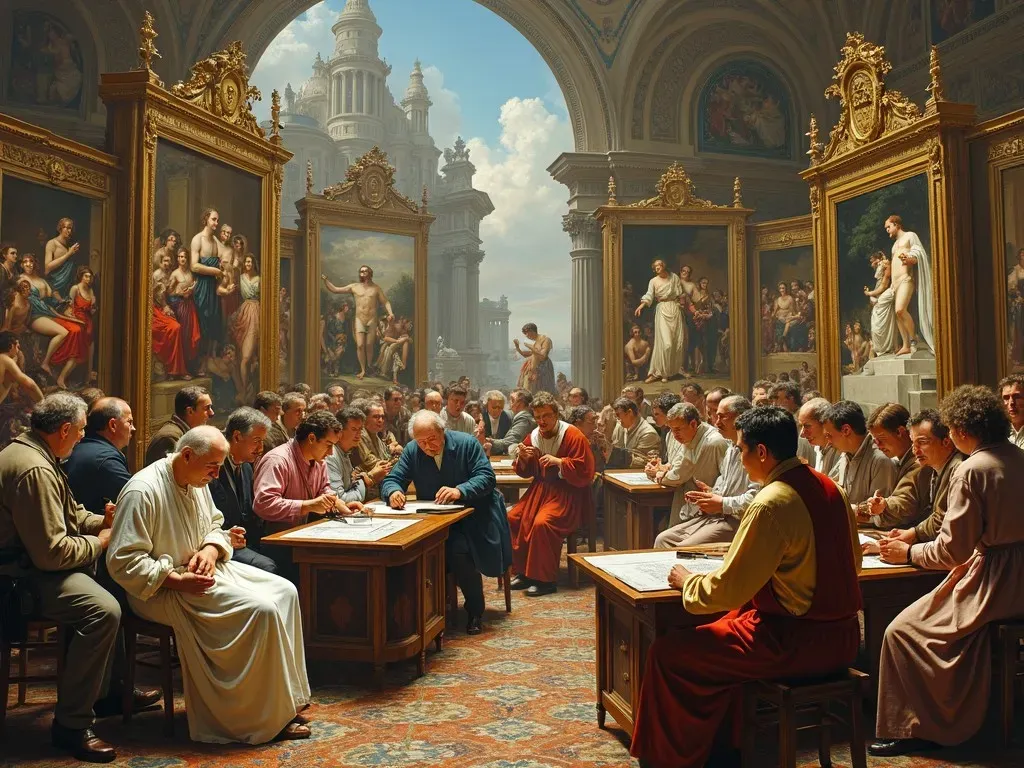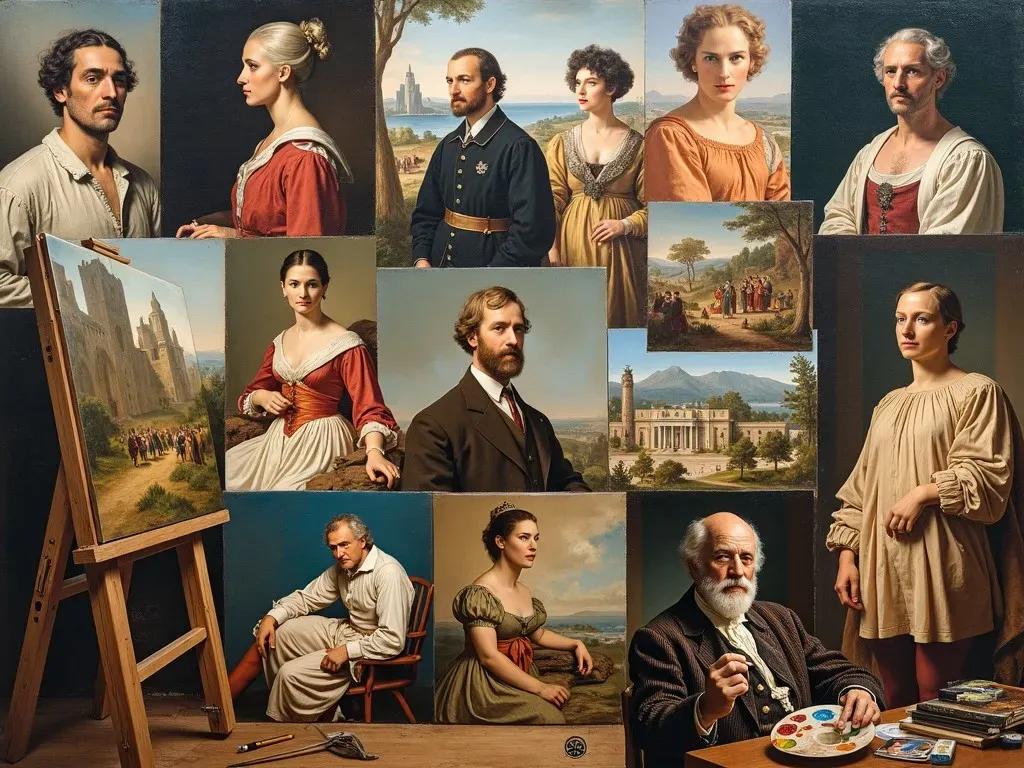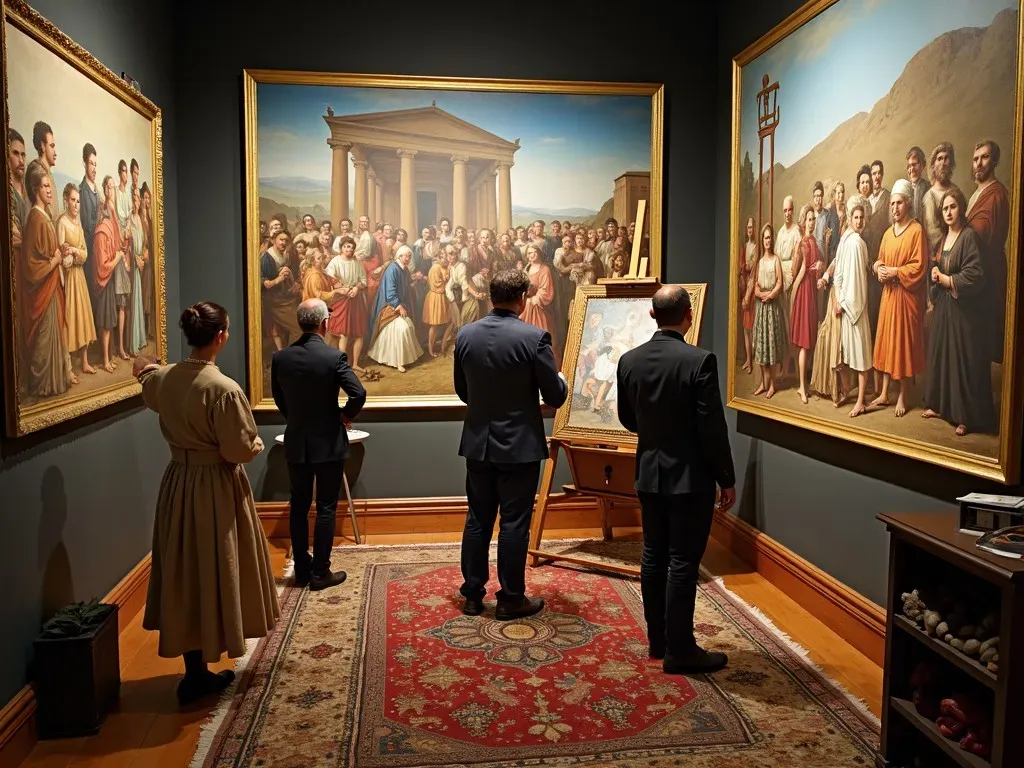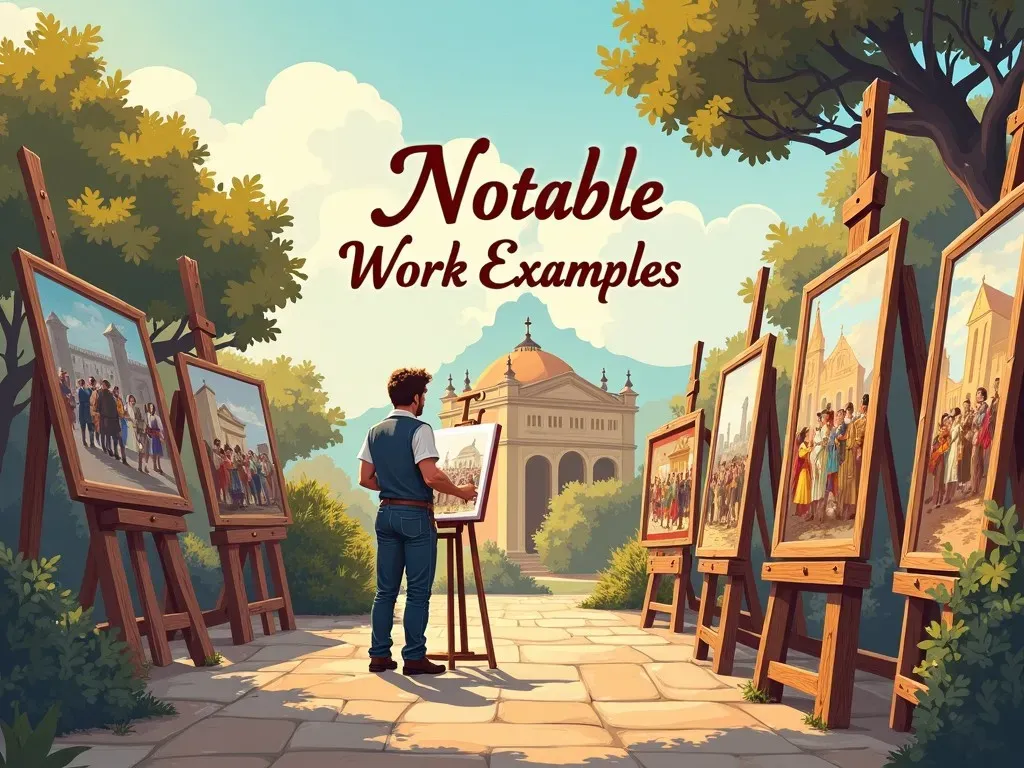History Painting: An In-Depth Look
History painting is a genre of painting that depicts significant moments in a narrative story, often drawn from mythology, historical events, or religious sources. This form of artwork serves not only as a visual representation but also as a profound commentary on the moments that shaped human experience.
Originating during the Renaissance and reaching its zenith through the 19th century, history painting has evolved in both style and substance, reflecting societal values and priorities of its time.
Understanding History Painting
History painting can be defined, in its broadest sense, as a genre of art that narrates stories from history and mythology. While the term came into common use in the 17th century, its roots stretch back to antiquity, encompassing elements of depicted narratives that provide moral or ethical enlightenment.
Characteristics of History Painting:
- Narrative Focus: Each history painting tells a story, often conveying a moral lesson or significant historical moment.
- Use of Figures: Typically, these works feature multiple figures, allowing for dynamic compositions and interactions that highlight the story’s emotional depth.
- Classical Influence: Many history paintings draw from classical themes, employing ideals from ancient Greek and Roman art.
- Symbolism: Artists often use symbolic elements to enhance the narrative or add layers of meaning.
Notable History Painters and Their Works
The following table summarizes some of the most renowned history painters and their significant contributions to the genre.
| Artist | Prominent Work | Time Period |
|---|---|---|
| Jacques-Louis David | The Death of Socrates | 1787 |
| Eugène Delacroix | Liberty Leading the People | 1830 |
| Jean-Auguste-Dominique Ingres | The Apotheosis of Homer | 1827 |
| Peter Paul Rubens | The Elevation of the Cross | 1610-1611 |
| Francisco Goya | The Third of May 1808 | 1814 |
Evolution Through Time
From its inception, history painting has undergone significant transformations, adapting to changing artistic movements and societal contexts.
Renaissance Beginnings
The Renaissance period marked a revival of classical themes and artistic Techniques. Artists heavily influenced by the likes of Michelangelo and Raphael expanded the boundaries of storytelling through their detailed and dramatic representations of significant historical and mythological moments.
Neoclassicism and Romanticism
As the 18th century unfolded, Neoclassicism emerged, emphasizing rationality and moral virtue, often illustrated through history painting. Jacques-Louis David championed this style, combining political narratives with a revival of classical aesthetics.
The Romantic movement later challenged the rigid principles of Neoclassicism, focusing more on emotion and individuality. This shift provided a backdrop for artists like Delacroix, whose dramatic use of color and form represented the upheaval and spirit of social change.
Modern Influence and Legacy
Although history painting saw a decline in the 20th century, its influence resonates in contemporary art. Artists continue to utilize historical narratives as a framework for exploring modern themes, using historical inquiry to comment on current events.
Frequently Asked Questions (FAQ)
Q: What defines history painting as a genre?
A: History painting is defined by its representation of significant events or narratives, often involving multiple characters and incorporating symbolism to support the story.
Q: How did history painting evolve over time?
A: It evolved from the classical influences of the Renaissance, through the ideals of Neoclassicism in the 18th century, to the emotional depth of Romanticism, eventually impacting modern artistic expressions.
Q: Why did history painting decline in the 20th century?
A: A move towards abstraction and modernism led to a shift in art that de-emphasized narrative storytelling in favor of personal expression and conceptual focus.
Q: What are some famous history paintings?
A: Notable history paintings include Delacroix’s "Liberty Leading the People," David’s "The Death of Socrates," and Goya’s "The Third of May 1808."
Impact and Relevance Today
History painting remains significant as it not only captures the past but also invites viewers to engage in historical dialogue, reflecting on the moral and ethical lessons of history. The emotional resonance and narrative depth of these works continue to inspire and provoke discussion in contemporary art.
Conclusion: The Enduring Legacy of History Painting
Historically, painting has served as a powerful tool for expression and a means to communicate complex narratives, portraying humanity’s triumphs and tragedies. The genre’s enduring relevance can be seen as a testament to its capacity to connect us to our shared past, enriching our understanding of both art and history.
For a deeper exploration into the world of history painting, refer to the comprehensive overview provided by Tate.




In-depth study of history painting reveals the art form’s capacity to transcend time, preserving the significance of events and the artistry of human experience.
